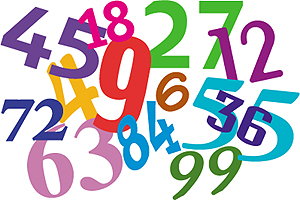Bilangan Prima Dengan Java
Dalam matematika, bilangan prima adalah bilangan asli yang lebih besar dari 1, yang faktor pembaginya adalah 1 dan bilangan itu sendiri. 2 dan 3 adalah bilangan prima. 4 bukan bilangan prima karena 4 bisa dibagi 2. Sepuluh bilangan prima yang pertama adalah 2, 3, 5, 7, 11, 13, 17, 19, 23 dan 29.
Jika suatu bilangan yang lebih besar dari satu bukan bilangan prima, maka bilangan itu disebut bilangan komposit.
Program:
cara pertama :
import java.util.Scanner;
public class bilanganprimadenganfor {
public static void main(String args[]) {
Scanner input = new Scanner(System.in);
String hasil = "";
boolean isPrima;
int number1;
int x = 2;
int count = 1;
for(number1=1;number1<=100;number1++){
if(number1==2 || number1==3 || number1 == 5 || number1 == 7)
{System.out.print(number1+" ");
}
else if (number1!=1 && number1%2!=0 && number1%3!=0 && number1%5!=0 && number1%7!=0)
{ System.out.print(number1+" ");
}
}
}
}
Cara ke 2
import java.util.Arrays;
public class prime {
private static int limit = 1000;
private static boolean[] sieve = new boolean[limit + 1];
private static int limitSqrt = (int)Math.sqrt((double)limit);
public static void main(String[] args) {
// there may be more efficient data structure
// arrangements than this (there are!) but
// this is the algorithm in Wikipedia
// initialize results array
Arrays.fill(sieve, false);
// the sieve works only for integers > 3, so
// set these trivially to their proper values
sieve[0] = false;
sieve[1] = false;
sieve[2] = true;
sieve[3] = true;
// loop through all possible integer values for x and y
// up to the square root of the max prime for the sieve
// we don't need any larger values for x or y since the
// max value for x or y will be the square root of n
// in the quadratics
// the theorem showed that the quadratics will produce all
// primes that also satisfy their wheel factorizations, so
// we can produce the value of n from the quadratic first
// and then filter n through the wheel quadratic
// there may be more efficient ways to do this, but this
// is the design in the Wikipedia article
// loop through all integers for x and y for calculating
// the quadratics
for (int x = 1; x <= limitSqrt; x++) {
for (int y = 1; y <= limitSqrt; y++) {
// first quadratic using m = 12 and r in R1 = {r : 1, 5}
int n = (4 * x * x) + (y * y);
if (n <= limit && (n % 12 == 1 || n % 12 == 5)) {
sieve[n] = !sieve[n];
}
// second quadratic using m = 12 and r in R2 = {r : 7}
n = (3 * x * x) + (y * y);
if (n <= limit && (n % 12 == 7)) {
sieve[n] = !sieve[n];
}
// third quadratic using m = 12 and r in R3 = {r : 11}
n = (3 * x * x) - (y * y);
if (x > y && n <= limit && (n % 12 == 11)) {
sieve[n] = !sieve[n];
} // end if
// note that R1 union R2 union R3 is the set R
// R = {r : 1, 5, 7, 11}
// which is all values 0 < r < 12 where r is
// a relative prime of 12
// Thus all primes become candidates
} // end for
} // end for
// remove all perfect squares since the quadratic
// wheel factorization filter removes only some of them
for (int n = 5; n <= limitSqrt; n++) {
if (sieve[n]) {
int x = n * n;
for (int i = x; i <= limit; i += x) {
sieve[i] = false;
} // end for
} // end if
} // end for
// put the results to the System.out device
// in 10x10 blocks
for (int i = 0, j = 0; i <= limit; i++) {
if (sieve[i]) {
System.out.printf("%,8d", i);
if (++j % 10 == 0) {
System.out.println();
} // end if
if (j % 100 == 0) {
System.out.println();
} // end if
} // end if
} // end for
} // end main
} // end class SieveOfAtkin
Label: Programming


0 Komentar:
Posting Komentar
Berlangganan Posting Komentar [Atom]
<< Beranda